This is the final post that corresponds to the course I have been facilitating called Uncertain Times: Traveling the Road of Transition Inside of Sufficiency. And as I think of what it means to Stand Together, and as the tagline for this session is to relax into sufficiency, I am drawn to what makes Sufficiency possible – what the cornerstones of sufficiency are so that we may relax into it. (For a review of this series’ learning highlights, check out last week’s post (Reflecting on Our Way Part 6.5 of 7).
First, consider for yourself: How do you relax, restore and nourish yourself?
Collaboration is a cornerstone to sufficiency. We as individuals cannot be sufficient unto ourselves. No wo/man is an island. It is impossible. What makes sufficiency possible is people coming together to have discussions about what is important to them and to allow the new paradigm of thinking – say, of sufficiency – to arise out of the passion, purpose and love of those individuals.
Love is a cornerstone of sufficiency. Love is seeing ourselves and others clearly and accepting them fully for who they actually are. Love is not limited to the feeling of attraction or liking. Love is showing up when it’s inconvenient, uncomfortable and when you are not in the mood. Love is a discipline, like mindful practice.
Mindful practice is a cornerstone of sufficiency. I hesitate to say spiritual, after all, what exactly does that mean? But in William Bridges words, “The creative aspect of being in a transition, namely the neutral zone, is a spiritual discovery, of a knowing that arises in us from being quiet and receiving it.” (from The Way of Transition) How do we receive? By listening. And to listen is a practice. Listening deeply is akin to tuning an instrument, getting a finer and finer resonance with smaller and smaller movements until the chords hum. We can attune our listening in such a way, and we can do it through ritual. Ritual, to me, is a practice that reflects my values. (Just a note that traditionally ritual is rooted in religious rites, and I am reclaiming it from that domain.) Ritual can be lighting a candle and sitting for any amount of time in quiet and listening to your heart beat, your breath and the sounds around you. Ritual can take any form that delights your heart. What rituals do you do now that bring you in alignment with your values, what you love, what you believe in?
In a moment of being mindful – when our practice spreads out into our daily life, we have the opportunity to connect to everyone in the world who is doing what we are doing in that moment – dancing naked in your living room, eating, making love, crying, laughing, fighting – simply through attuning. This is one way to be in collaboration. There was a time in my life when I stuffed my schedule to the point where I felt burdened if someone died or got married. I didn’t have time for rituals! I was not available for collaboration.
Allowing is a cornerstone of sufficiency. Allowing is about giving ourselves permission to not get it right, to experiment and try on something new, to allow that new thing to be temporary and to allow it to fail and for learning to arise. It is the invitation to be detached to the outcome and to allow the changes that are occurring anyway, to occur. Allowing includes the art of relaxing, to give up our expectations for the ways in which we think things should go, or how people should be. This includes our idealized visions about the future, the expectations we have for another person or ourselves. Allowing also includes the art of adequacy. Adequacy’s etymology is “enough”. What would life look like if you worked within adequate? For me it can be vacuuming around the furniture rather than under it, to do a good enough job for today with the cleaning because I have other priorities to attend to. When we combine experimentation and adequacy we offer ourselves the gift of playfulness. Play is an integral phenomenon of innovation. If we do not have to have all the answers and do not have to do them perfectly, there is room for something new to arise. This is one the gift of Transition; it is the fertile ground for new paradigms to be born. We can use transition to continually recalibrate towards that which we love and care.
As a recovering perfectionist, it feels important to say how important it is that we allow ourselves to experiment, play and invent, to remind all of us that we don’t have to get it all right, right away. In the spirit of transparency, this course was an experiment, a stand in my allowing myself to try something new – to be committed to a group, and to make mistakes. To trust that we would learn together in what I declared this course to be: an learning laboratory, an experiment. So much of life is trial and error and reorientation, and I am so grateful to have orientated with you deeper into sufficiency.
I assert that to be in sufficiency is to grow up, to mature. Being in this conversation is an action of personal growth. It doesn’t mean you are a child or less grown up if sufficiency doesn’t interest you, but have you noticed that sufficiency is sobering? It’s the acceptance of the ever changing reality that is life and being alive in it. William Bridges again: “Maturity is a ripening rather than an attaining…The barriers to this kind of growth are when we stop viewing our flaws as something to fix or get over, but rather as signals to let go of something – the way we have been seeing or doing things – and to initiate a time of transition. Seeing signals rather than problems, transitions rather than solutions.” (from The Way of Transition)
May you continue your journey into sufficiency.



